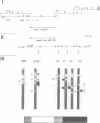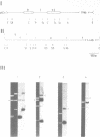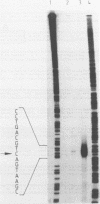Abstract
A comparison of gene structure, sequence, and transcription pattern of heat shock loci 93D of Drosophila melanogaster and 48B of Drosophila hydei has been performed. Both heat shock loci consist of an unique region that is flanked by an internally repetitive element. Different members of these elements are highly conserved, repeat unit length, however, and primary sequence diverged totally. Whereas the overall gene structure in both species is substantially related, sequence conservation is only observed at very few sites in the unique region. These represent primarily sequences that are identified as regulatory elements for faithful transcription and processing. The number and size of transcripts obtained from heat shock locus 48B in third instar larvae closely resembles the pattern of heat shock locus 93D. Thus their quite alike structure and transcription pattern suggest strongly a conserved hitherto unknown function.
Full text
PDF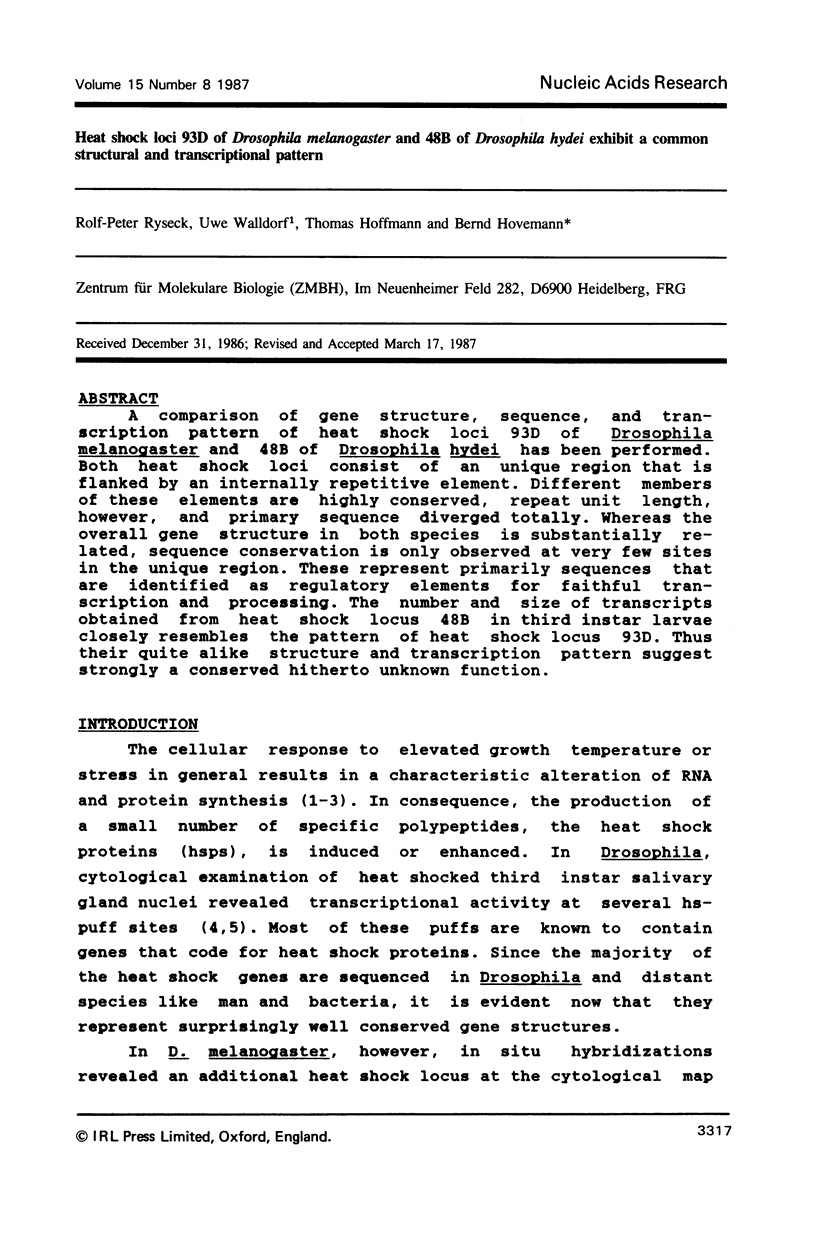
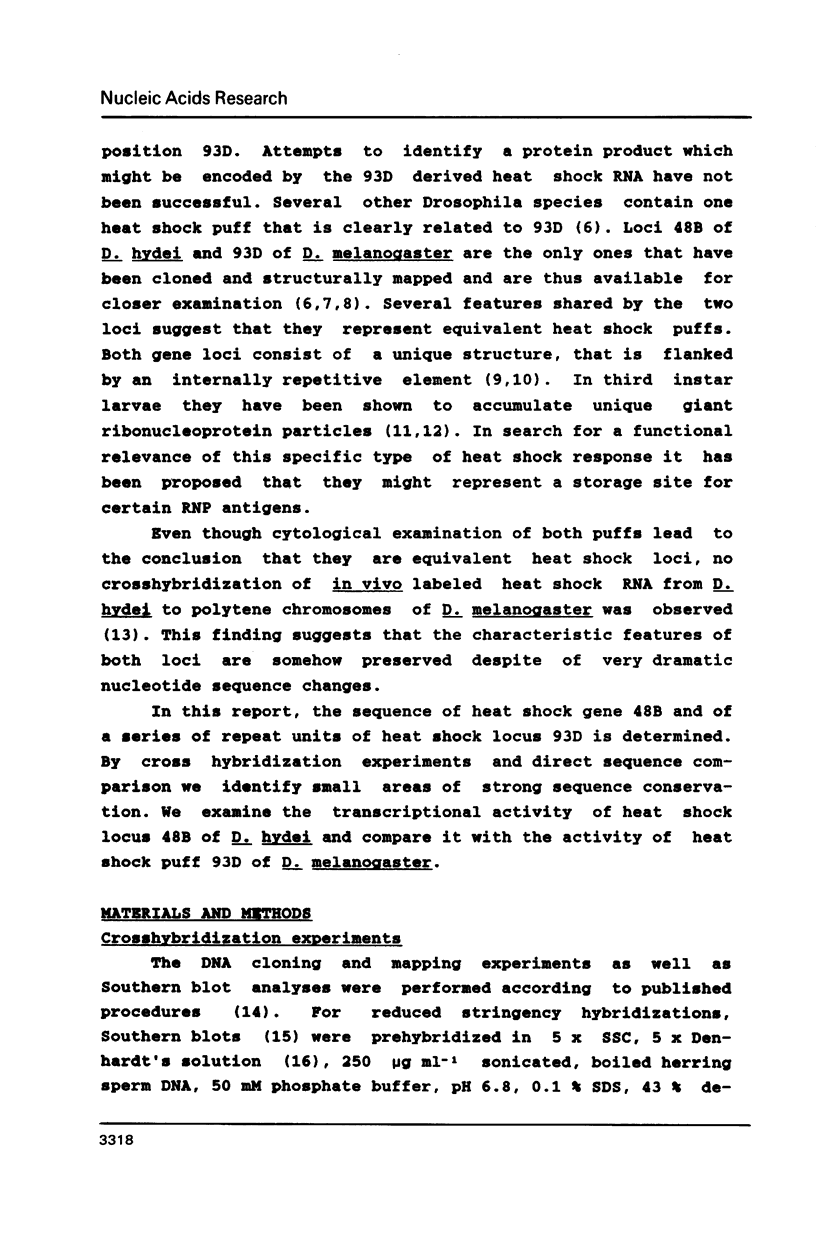
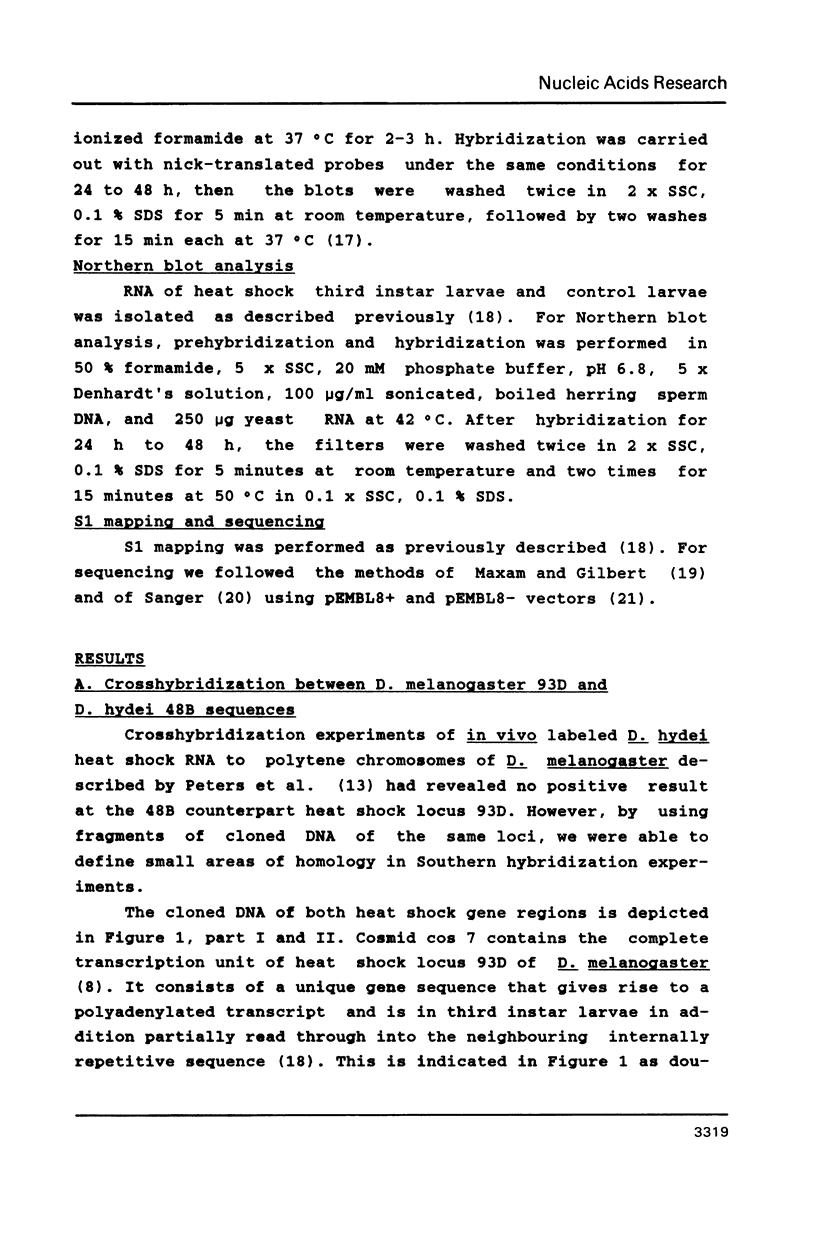
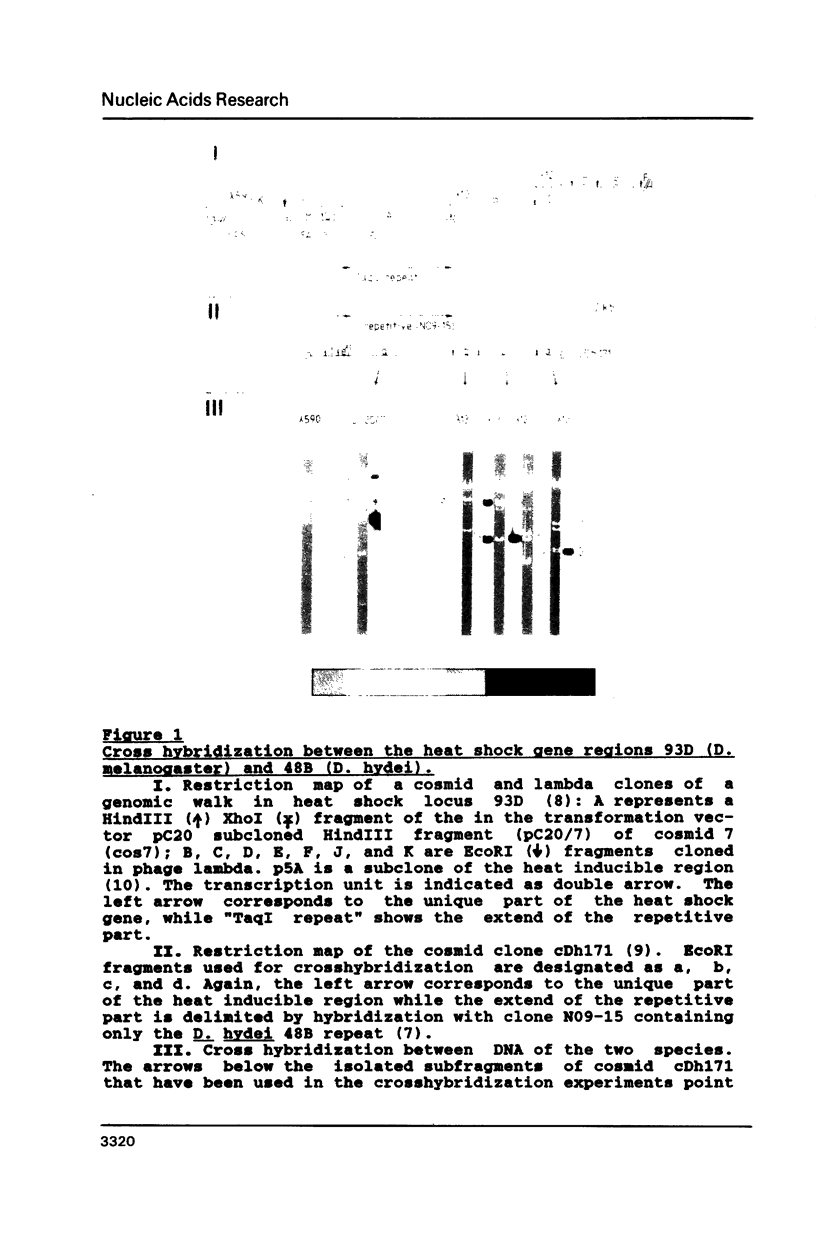
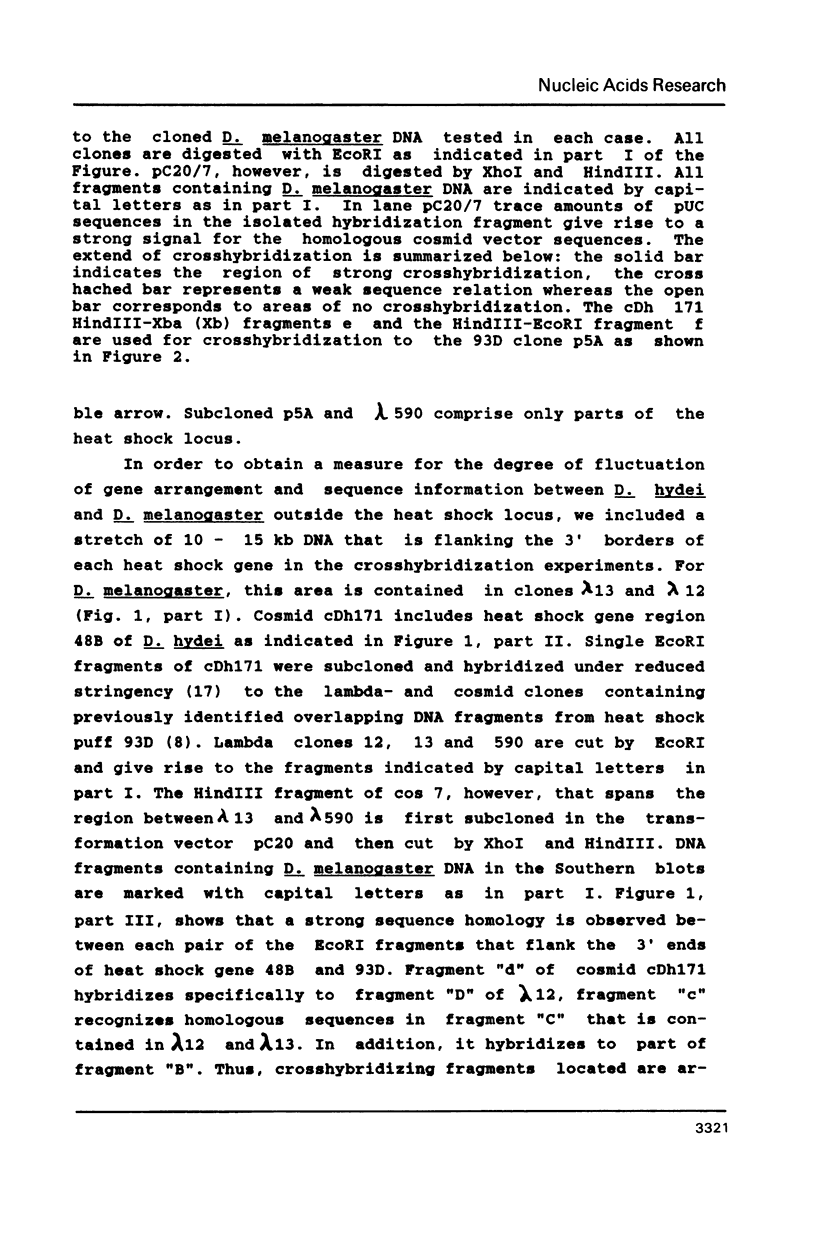
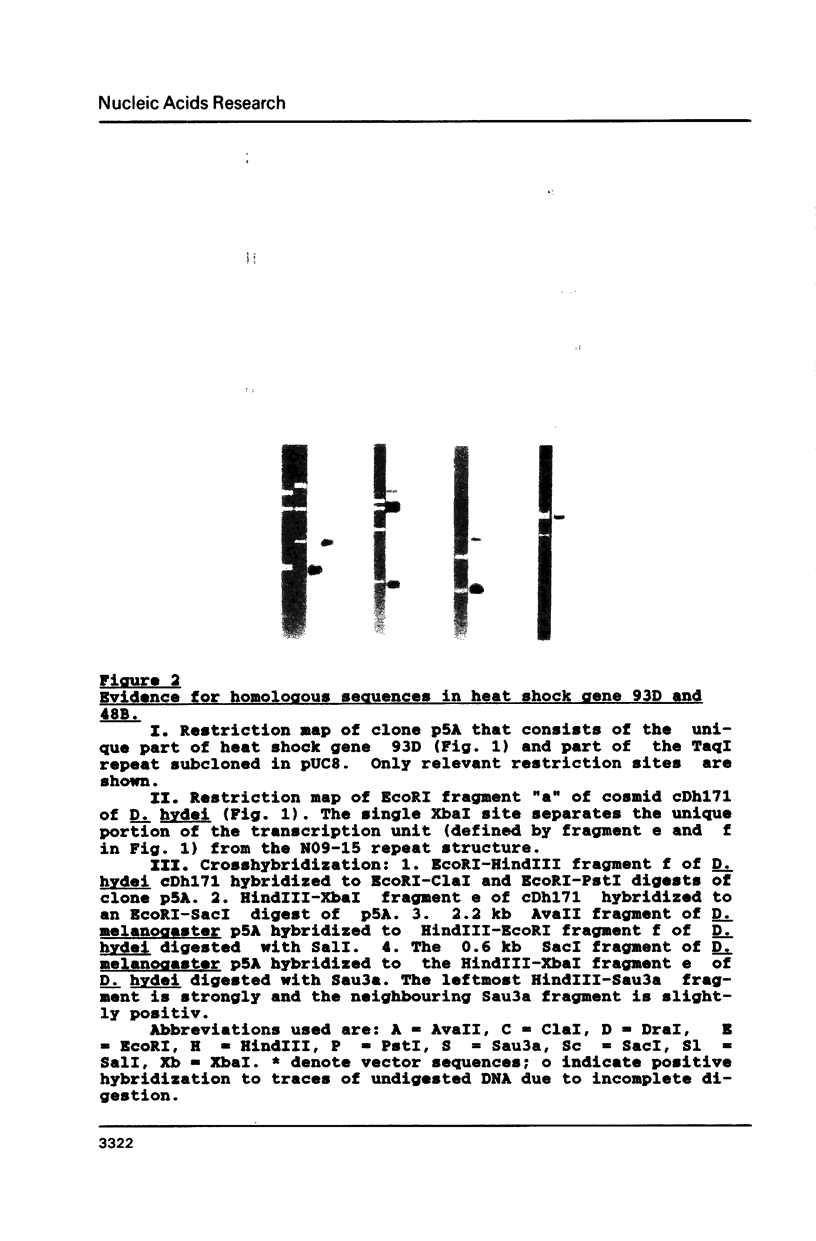
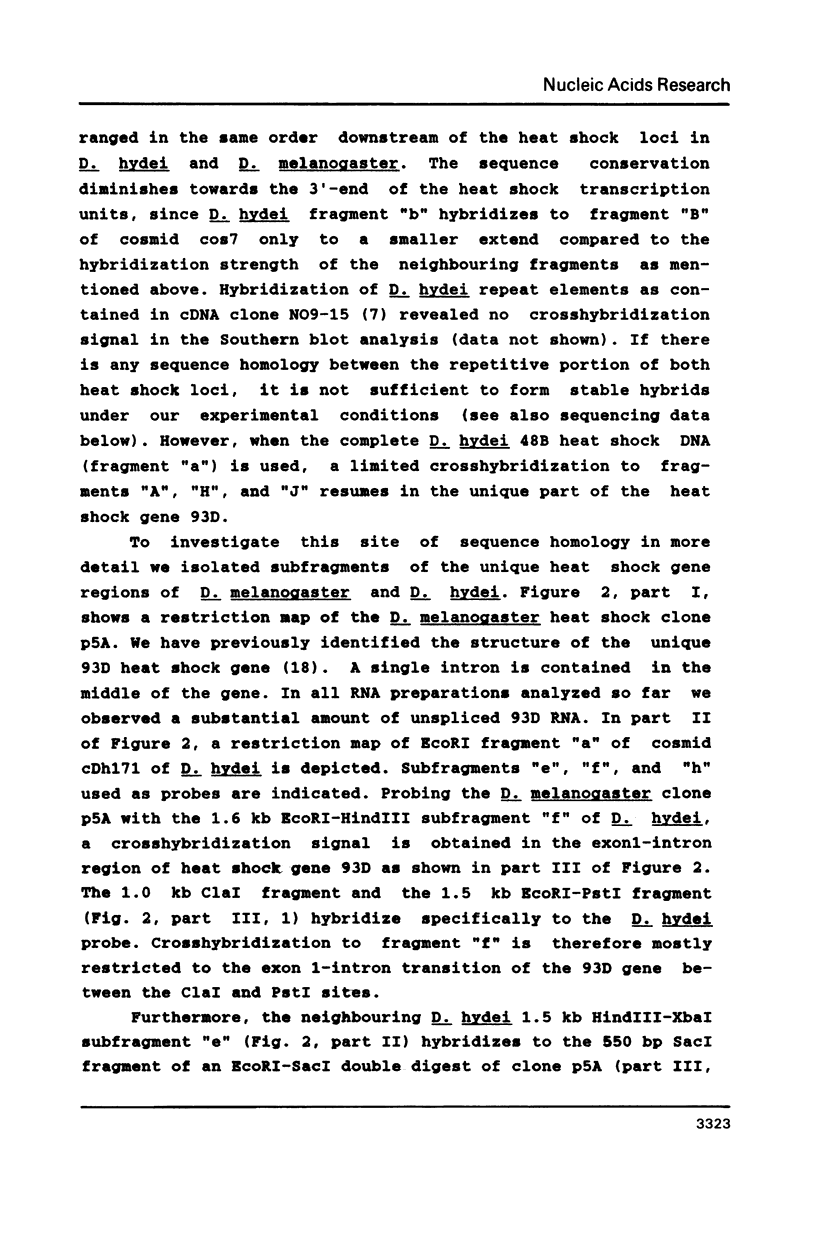
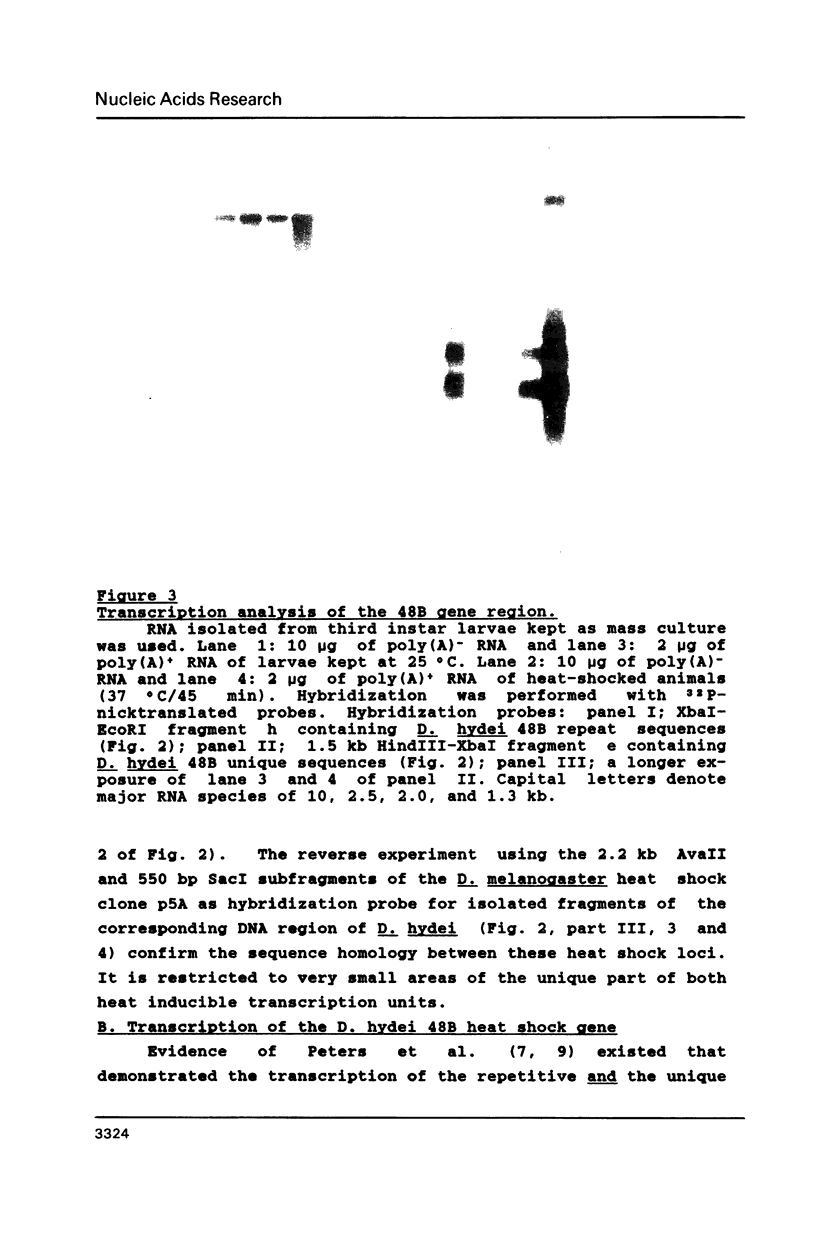
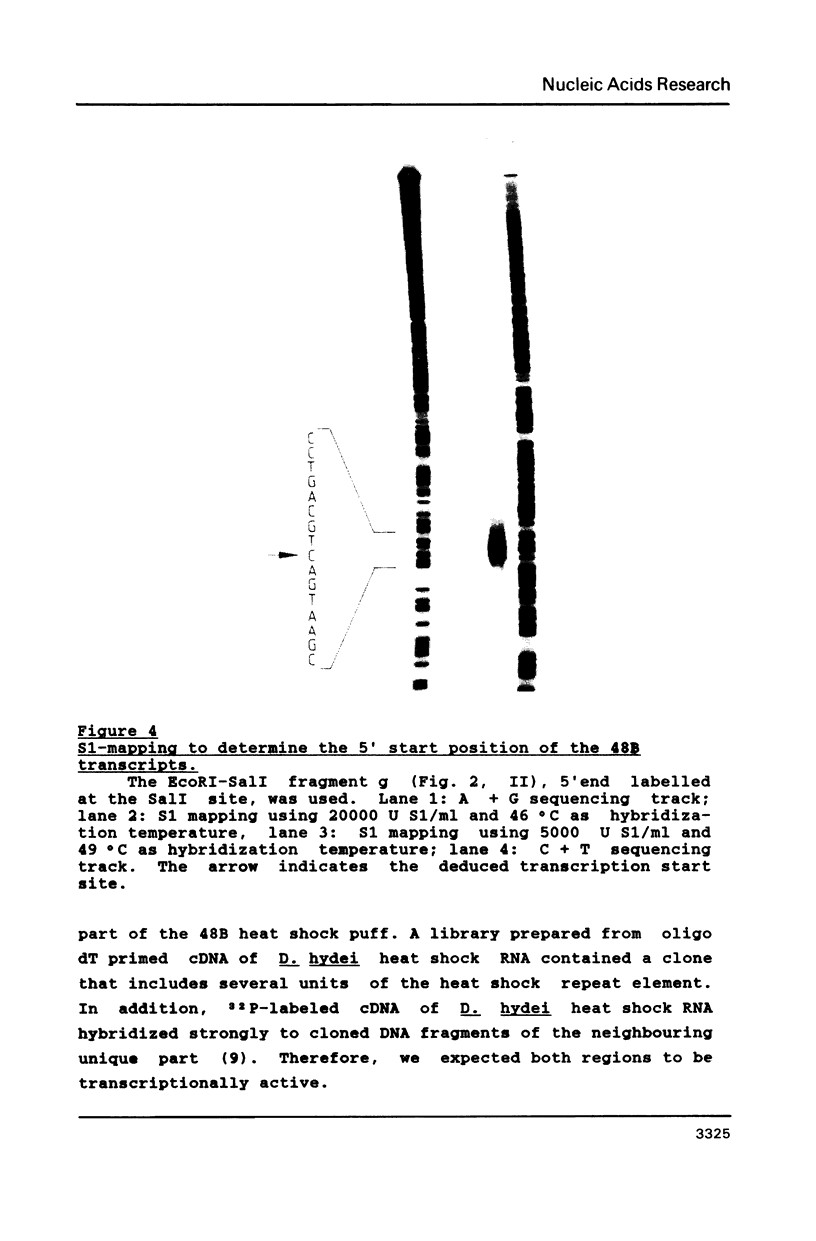
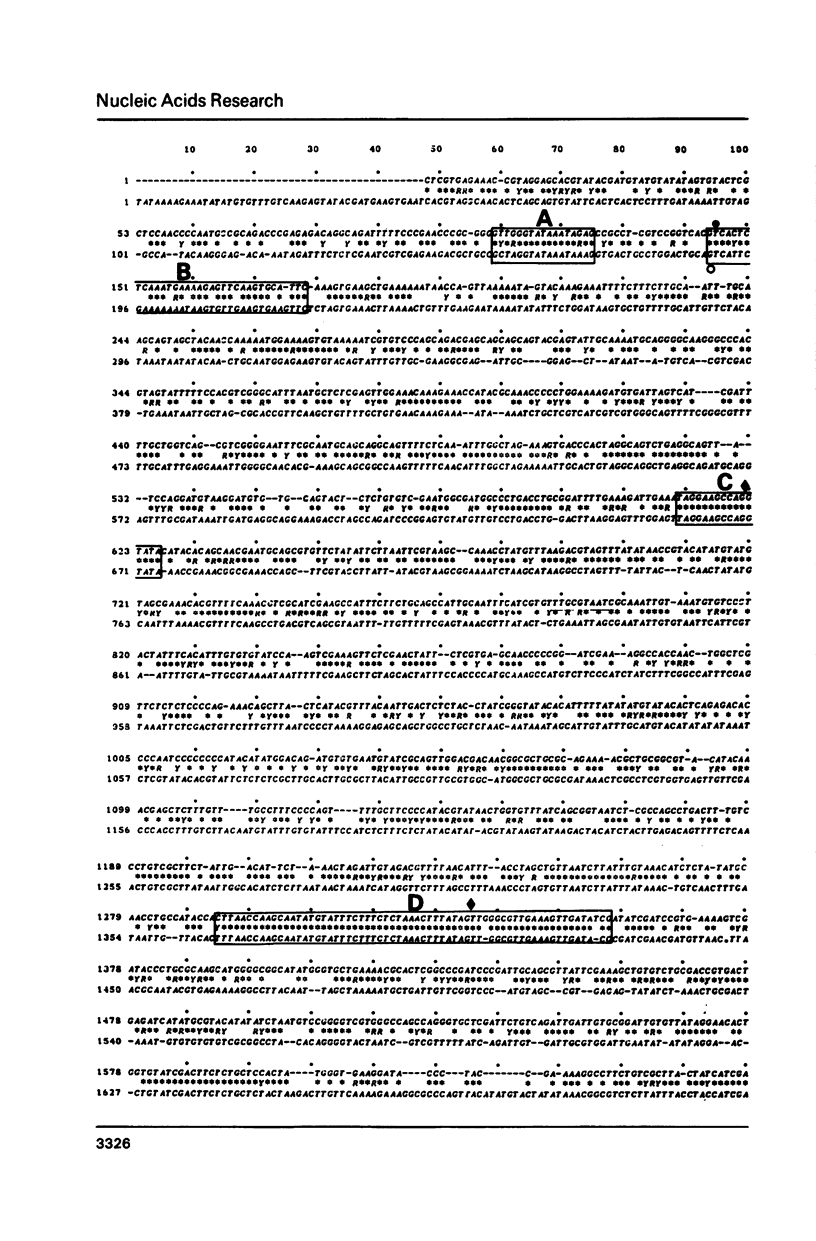
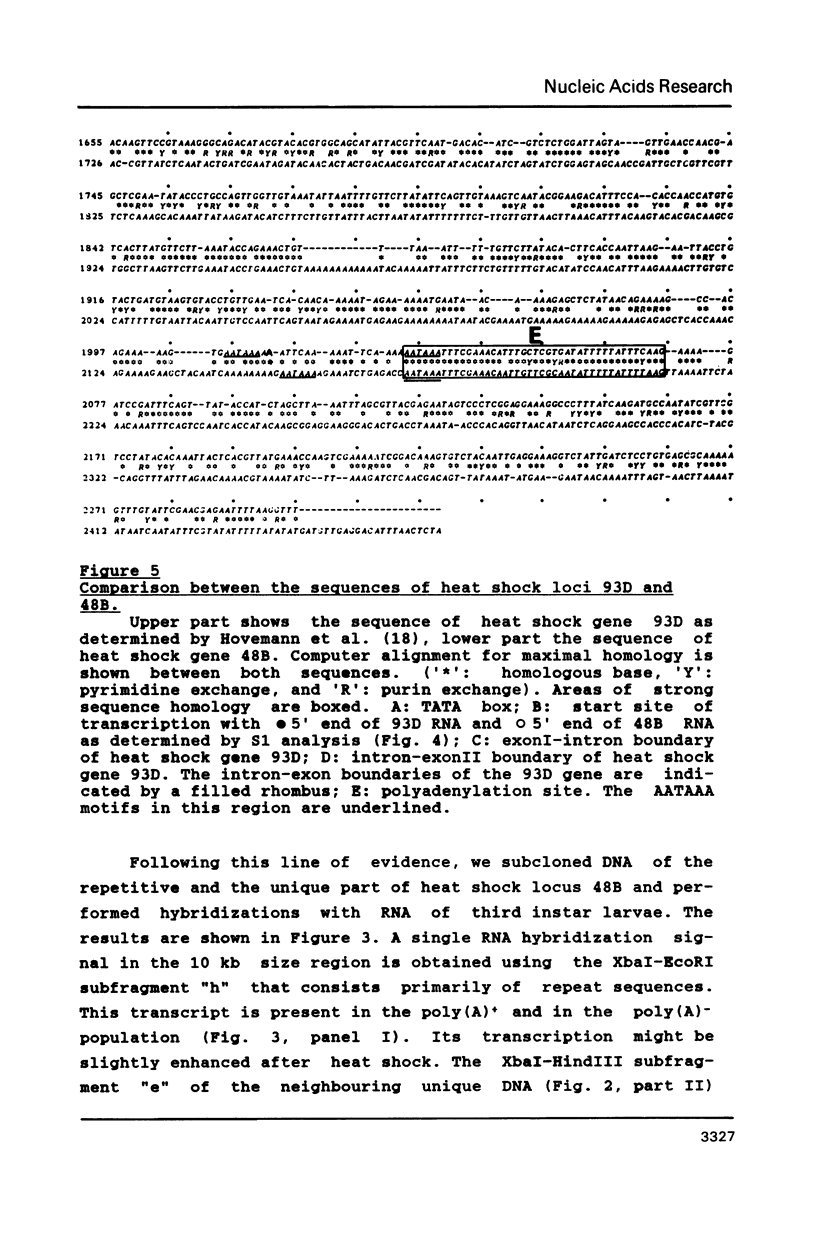
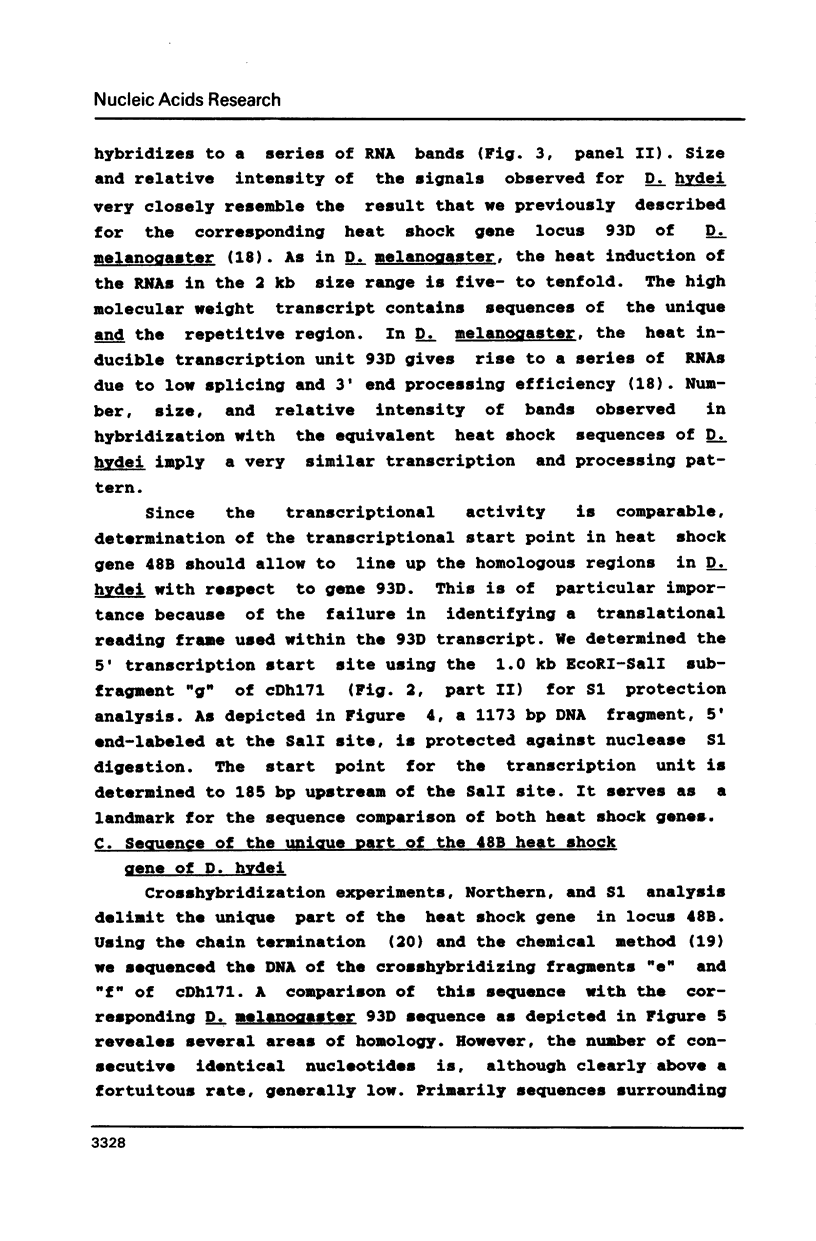
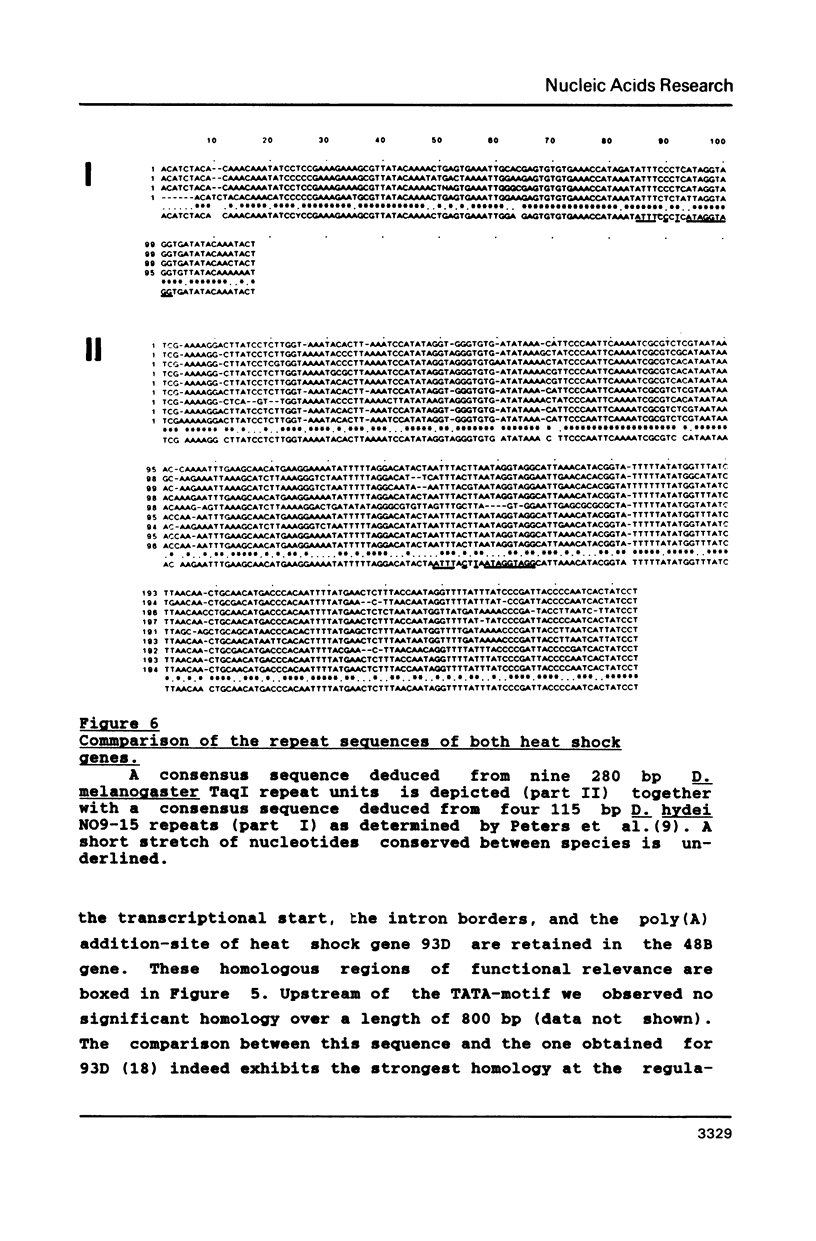
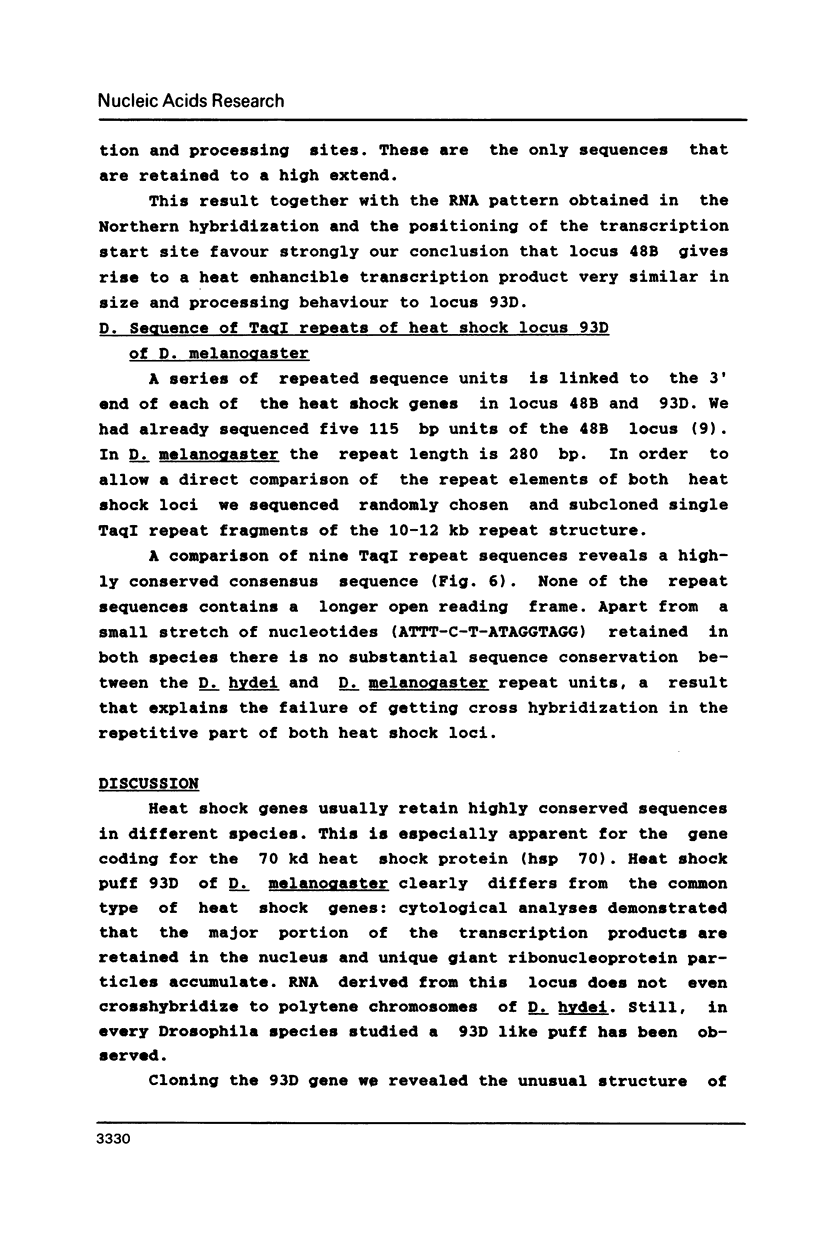
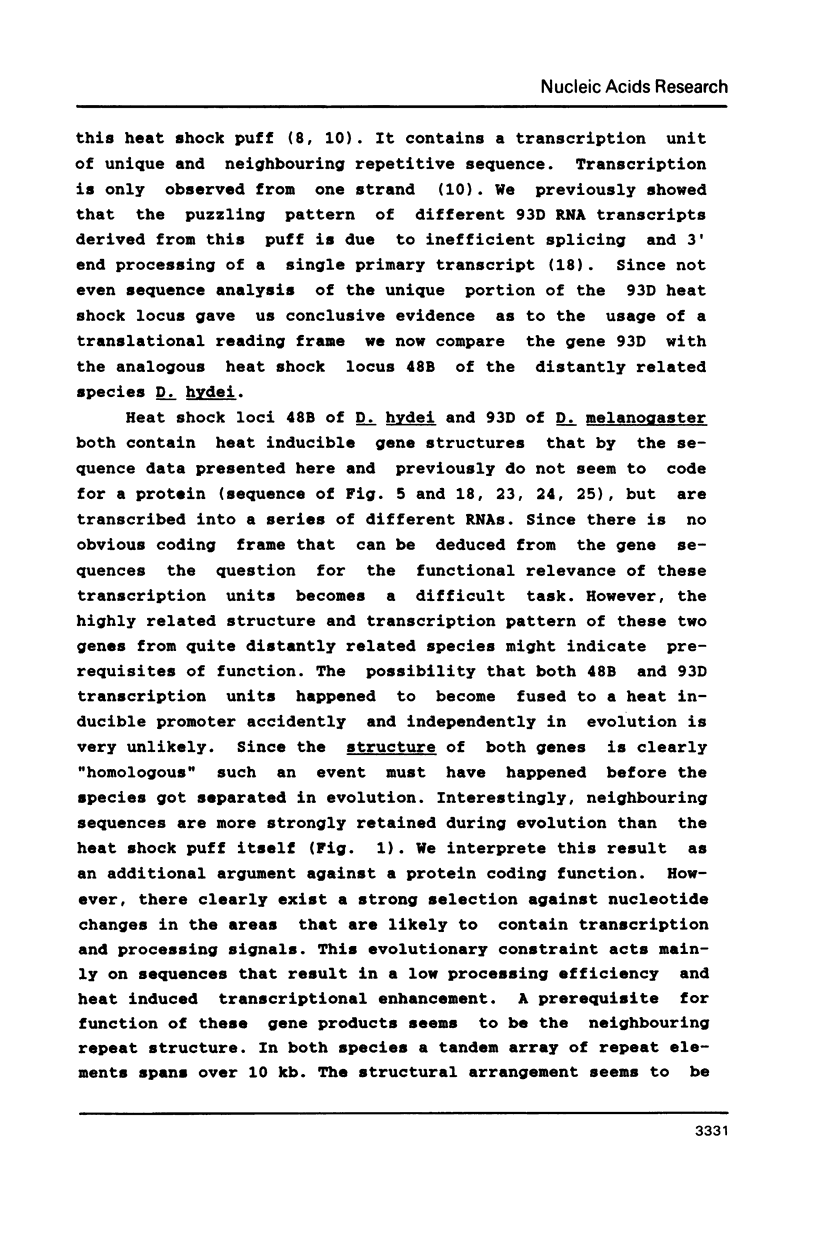

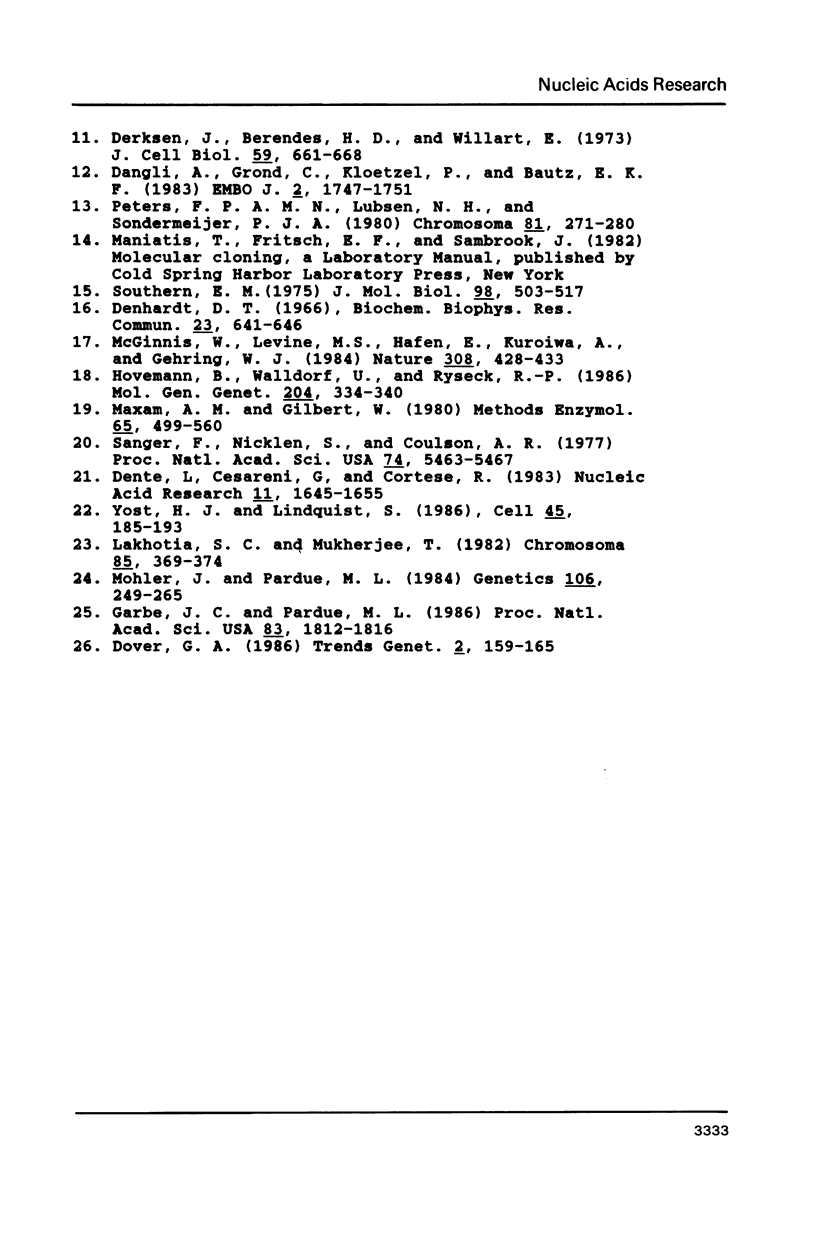
Images in this article
Selected References
These references are in PubMed. This may not be the complete list of references from this article.
- Ashburner M., Bonner J. J. The induction of gene activity in drosophilia by heat shock. Cell. 1979 Jun;17(2):241–254. doi: 10.1016/0092-8674(79)90150-8. [DOI] [PubMed] [Google Scholar]
- Ashburner M. Patterns of puffing activity in the salivary gland chromosomes of Drosophila. V. Responses to environmental treatments. Chromosoma. 1970;31(3):356–376. doi: 10.1007/BF00321231. [DOI] [PubMed] [Google Scholar]
- Dangli A., Grond C., Kloetzel P., Bautz E. K. Heat-shock puff 93 D from Drosophila melanogaster: accumulation of a RNP-specific antigen associated with giant particles of possible storage function. EMBO J. 1983;2(10):1747–1751. doi: 10.1002/j.1460-2075.1983.tb01652.x. [DOI] [PMC free article] [PubMed] [Google Scholar]
- Denhardt D. T. A membrane-filter technique for the detection of complementary DNA. Biochem Biophys Res Commun. 1966 Jun 13;23(5):641–646. doi: 10.1016/0006-291x(66)90447-5. [DOI] [PubMed] [Google Scholar]
- Dente L., Cesareni G., Cortese R. pEMBL: a new family of single stranded plasmids. Nucleic Acids Res. 1983 Mar 25;11(6):1645–1655. doi: 10.1093/nar/11.6.1645. [DOI] [PMC free article] [PubMed] [Google Scholar]
- Derksen J., Berendes H. D., Willart E. Production and release of a locus-specific ribonucleoprotein product in polytene nuclei of Drosophila hydei. J Cell Biol. 1973 Dec;59(3):661–668. doi: 10.1083/jcb.59.3.661. [DOI] [PMC free article] [PubMed] [Google Scholar]
- Garbe J. C., Pardue M. L. Heat shock locus 93D of Drosophila melanogaster: a spliced RNA most strongly conserved in the intron sequence. Proc Natl Acad Sci U S A. 1986 Mar;83(6):1812–1816. doi: 10.1073/pnas.83.6.1812. [DOI] [PMC free article] [PubMed] [Google Scholar]
- Lakhotia S. C., Mukherjee T. Absence of novel translation products in relation to induced activity of the 93D puff in Drosophila melanogaster. Chromosoma. 1982;85(3):369–374. doi: 10.1007/BF00330359. [DOI] [PubMed] [Google Scholar]
- Maxam A. M., Gilbert W. Sequencing end-labeled DNA with base-specific chemical cleavages. Methods Enzymol. 1980;65(1):499–560. doi: 10.1016/s0076-6879(80)65059-9. [DOI] [PubMed] [Google Scholar]
- McGinnis W., Levine M. S., Hafen E., Kuroiwa A., Gehring W. J. A conserved DNA sequence in homoeotic genes of the Drosophila Antennapedia and bithorax complexes. 1984 Mar 29-Apr 4Nature. 308(5958):428–433. doi: 10.1038/308428a0. [DOI] [PubMed] [Google Scholar]
- Mohler J., Pardue M. L. Mutational Analysis of the Region Surrounding the 93d Heat Shock Locus of DROSOPHILA MELANOGASTER. Genetics. 1984 Feb;106(2):249–265. doi: 10.1093/genetics/106.2.249. [DOI] [PMC free article] [PubMed] [Google Scholar]
- Peters F. P., Grond C. J., Sondermeijer P. J., Lubsen N. H. Chromosomal arrangement of heat shock locus 2-48B in Drosophila hydei. Chromosoma. 1982;85(2):237–249. doi: 10.1007/BF00294968. [DOI] [PubMed] [Google Scholar]
- Peters F. P., Lubsen N. H., Sondermeijer P. J. Rapid sequence divergence in a heat shock locus of Drosophila. Chromosoma. 1980;81(2):271–280. doi: 10.1007/BF00285953. [DOI] [PubMed] [Google Scholar]
- Peters F. P., Lubsen N. H., Walldorf U., Moormann R. J., Hovemann B. The unusual structure of heat shock locus 2-48B in Drosophila hydei. Mol Gen Genet. 1984;197(3):392–398. doi: 10.1007/BF00329934. [DOI] [PubMed] [Google Scholar]
- Ryseck R. P., Walldorf U., Hovemann B. Two major RNA products are transcribed from heat-shock locus 93D of Drosophila melanogaster. Chromosoma. 1985;93(1):17–20. doi: 10.1007/BF01259440. [DOI] [PubMed] [Google Scholar]
- Sanger F., Nicklen S., Coulson A. R. DNA sequencing with chain-terminating inhibitors. Proc Natl Acad Sci U S A. 1977 Dec;74(12):5463–5467. doi: 10.1073/pnas.74.12.5463. [DOI] [PMC free article] [PubMed] [Google Scholar]
- Southern E. M. Detection of specific sequences among DNA fragments separated by gel electrophoresis. J Mol Biol. 1975 Nov 5;98(3):503–517. doi: 10.1016/s0022-2836(75)80083-0. [DOI] [PubMed] [Google Scholar]
- Walldorf U., Richter S., Ryseck R. P., Steller H., Edström J. E., Bautz E. K., Hovemann B. Cloning of heat-shock locus 93D from Drosophila melanogaster. EMBO J. 1984 Nov;3(11):2499–2504. doi: 10.1002/j.1460-2075.1984.tb02163.x. [DOI] [PMC free article] [PubMed] [Google Scholar]
- Yost H. J., Lindquist S. RNA splicing is interrupted by heat shock and is rescued by heat shock protein synthesis. Cell. 1986 Apr 25;45(2):185–193. doi: 10.1016/0092-8674(86)90382-x. [DOI] [PubMed] [Google Scholar]



